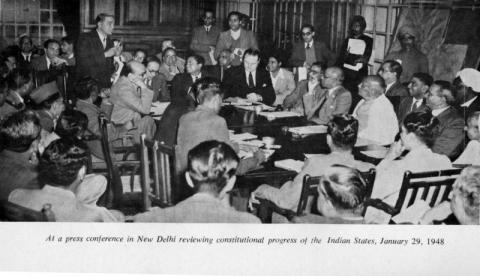
When the East India Company sunk its teeth into the Indian pie, the nawabs and rajas of Indian states were seen as strategic allies. The Company forced treaties upon the rulers of these states by which the Company was recognised as the paramount power. With the withdrawal of the British in August 1947, this paramouncy would lapse and the rulers of these Indian states would be free once again. About two fifths of the territory of India comprised Princely States. Some like Hyderabad and Kashmir were larger than several European countries. Others were tiny fiefdoms or jagirs comprising no more than a few villages. Together, there were 565 such states that were given the freedom to join either India or Pakistan or remain free after the midnight hour of 15th August, 1947.
On 27th June, 1947, less than two months before the hour of reckoning, a new States Department was set up under the charge of Sardar Patel to facilitate the task of accession of these princely states with the Dominion of India. Patel chose V.P. Menon as the Secretary of this Department. Together, they began the monumental task of piecing together the Indian nation.
While some states like Bikaner and Baroda were quick to come on board, others like Kashmir and Manipur vascillated for months. Junagadh in the middle of Kathiawar acceded to Pakistan. Travancore declared its independence and Hyderabad, one of the richest Indian states situated in the heart of India wished to become a sovereign independent nation.
Sardar Patel foresaw in this chaos, the potential for civil war. The violence of Partition had created a deep sense of fear and distrust among the people. Wanting to avert anything that might endanger the unity and integrity of the young nation, Patel began at the age of 72, to take charge of this challenging task. Nowhere else in the world had a nation been integrated from such a varied diverse population in such a short span of time. But Sardar was not a man to be defeated by challenges.
Patiently and untiringly, Patel, Menon and their team began the process by which 565 princely states were integrated into the Union of India. The geography of India would have been dangerously different but for their stellar foresight and remarkable contribution. This was Patel's most lasting legacy toward the nation he gave his life for.